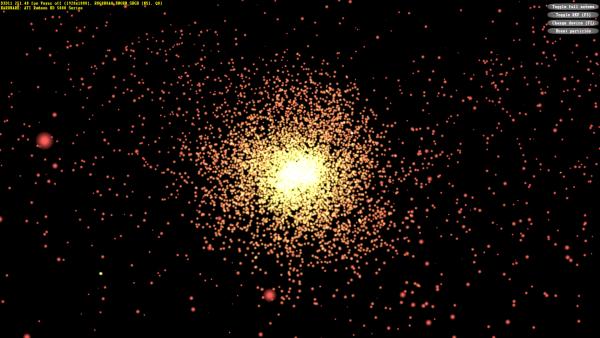NVIDIA GeForce GTX 480 Graphics Card
|
Direct3D 11 shaders
To test the graphics cards in DirectX 11 tasks, we'll use samples from Microsoft, AMD and NVIDIA SDKs, as well as some demos.
Firstly, let's look at tests involving the new compute shaders. Being one of the key innovations of the new DirectX API, these shaders are used in a number of tasks, including postprocessing, simulations, etc. The first test is a DirectX SDK example with HDR rendering, tone mapping and postprocessing utilizing pixel or compute shaders.
We have to admit that Radeon HD 5870 outperforms GeForce GTX 480 in this test. The novelty loses when both pixel and compute shaders are used. The lag is considerable, up to 1.5 times, at that. As for Radeon HD 5970, it only has one GPU loaded, so it's outperformed by Radeon HD 5870.
The second test is also taken from Microsoft's DirectX SDK. It demonstrates N-body gravity computing, a simulation of a dynamic particle system affected by gravity.
The NVIDIA's novelty loses to Radeon HD 5870 yet again. About 25% this time, which is also a lot. Radeon HD 5970 still cannot uncover its potential, having only one GPU working.
The next text is NVIDIA's Realistic Character Hair. It uses a combination of geometry and compute shaders and tesselation, so it's closer to real tasks than the pure synthetics of the first two tests.
Well, in this test NVIDIA's new GPU shows a great result, considerably outperforming both Radeon HD 5870 and Radeon HD 5970 (still has only one GPU working). Note the performance difference of 1.5-1.8 times between the single-GPU cards, as well as their behavior when hardware tesselation is enabled.
With hardware tesselation, GeForce GTX 480 is sped up by 15%, while AMD's RV870-based solution is slowed down by almost 5%. In other words, tesselation is beneficial for NVIDIA's product in this case. This can probably be explained by different geometry pipelines, the performance of which we're going to examine next.
Write a comment below. No registration needed!
|
|
 |
Article navigation:
Page 1: Introduction, specs, key features
Page 2: GPC, SM, Scheduler, TMUs
Page 3: PolyMorph and Raster Engines, memory, ROPs
Page 4: General-purpose computing, ray tracing, etc.
Page 5: Design, cooling
Page 6: DX9 synthetic tests
Page 7: DX10 synthetic tests
Page 8: More DX10 synthetic tests
Page 9: 3DMark Vantage Feature Tests
Page 10: DX11 synthetic tests
Page 11: More DX11 synthetic tests
Page 12: Performance in games, conclusions
|
|
|



